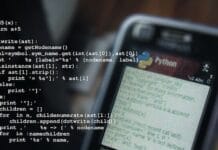Python is a powerful programming language that is widely used in the field of data science due to its simplicity, flexibility, and powerful libraries. In this post, we will provide an introduction to Python for data science, covering the basic concepts and tools needed to get started.
What is Python and why use it for Data Science?
Python is a general-purpose programming language that is easy to learn and use. It has gained popularity in the field of data science due to its simplicity, flexibility, and powerful libraries for scientific computing, data analysis, and visualization. Python also has a large and active community of developers and users, which means there is a wealth of resources available for learning and using Python for data science.
Installing Python and setting up a Python environment for Data Science
Before we can start using Python for data science, we need to install Python and set up a Python environment. There are several ways to install Python, but one of the most popular and convenient ways is to use a distribution like Anaconda or Miniconda, which comes bundled with many of the popular Python libraries for data science.
Once we have installed Python, we need to set up a Python environment for data science. A Python environment is a self-contained workspace that includes all the necessary libraries and tools for working with data in Python. One of the most popular ways to set up a Python environment for data science is to use Conda, a package manager that comes bundled with Anaconda and Miniconda.
Basic Python Syntax and Data Types
Now that we have set up a Python environment, let’s dive into the basic syntax and data types in Python. Python is a high-level language that is easy to read and write, and it uses whitespace indentation to indicate code blocks. Here’s an example of a simple Python program that prints “Hello, World!” to the console:
print("Hello, World!")
In Python, we can use variables to store data. A variable is a named reference to a value, which can be a string, integer, float, list, or dictionary. Here’s an example of how to define and use a variable in Python:
x = 42
print(x)
In addition to variables, Python has several built-in data types, including strings, integers, floats, lists, and dictionaries. Here’s an example of how to define and use these data types in Python:
# Strings
message = "Hello, World!"
print(message)x = 42
print(x)
y = 3.14
print(y)
fruits = [“apple”, “banana”, “cherry”]
print(fruits)
person = {“name”: “John”, “age”: 30, “city”: “New York”}
print(person)
Control Flow Statements
Python also has several control flow statements that allow us to control the flow of our code based on certain conditions. These control flow statements include if-else statements, for loops, and while loops. Here’s an example of how to use these control flow statements in Python:
# If-else statements
x = 42
if x > 0:
print("x is positive")
else:
print("x is negative")fruits = [“apple”, “banana”, “cherry”]
for fruit in fruits:
print(fruit)
i = 0
while i < 5:
print(i)
i += 1
Functions and Modules
In Python, we can define and use functions to organize our code and make it more reusable. A function
is a block of code that performs a specific task and can be called from other parts of our code. Here’s an example of how to define and use a function in Python:
def square(x):
return x * xIn addition to functions, Python also has modules, which are collections of functions, classes, and variables that can be imported and used in our code. Python comes with a standard library that includes many useful modules, and there are also many third-party modules available for data science. Here’s an example of how to import and use a module in Python:
import math
print(math.sqrt(25))
Introduction to Jupyter Notebook
Jupyter Notebook is a web-based interactive development environment (IDE) that is widely used in data science. It allows us to write, run, and share code in a collaborative and reproducible way. Jupyter Notebook is particularly useful for data science because it allows us to mix code, text, and visualizations in a single document. Here’s an example of how to use Jupyter Notebook:
- Open Jupyter Notebook
- Create a new notebook
- Write some Python code in a cell
- Run the code by clicking the “Run” button or pressing “Shift + Enter”
- Add some text or a visualization in a Markdown cell
- Save the notebook and share it with others
Basic Data Science Libraries
Python has many powerful libraries for data science, but three of the most popular and useful ones are NumPy, Pandas, and Matplotlib.
NumPy is a library for numerical computing in Python. It provides support for large, multi-dimensional arrays and matrices, along with a wide range of mathematical functions for working with these arrays. NumPy is particularly useful for data manipulation, scientific computing, and machine learning.
Pandas is a library for data manipulation and analysis in Python. It provides a data structure called a DataFrame, which is similar to a spreadsheet or a SQL table, along with many functions for manipulating and analyzing this data. Pandas is particularly useful for data cleaning, preprocessing, and exploration.
Matplotlib is a library for data visualization in Python. It provides support for creating a wide range of plots, including line plots, scatter plots, bar plots, and histograms, along with many customization options for these plots. Matplotlib is particularly useful for visualizing data and communicating insights to others.
Conclusion
In this post, we have provided an introduction to Python for data science, covering the basic concepts and tools needed to get started. We have covered the basic syntax and data types in Python, along with control flow statements, functions, and modules. We have also introduced Jupyter Notebook and three of the most popular and useful libraries for data science in Python: NumPy, Pandas, and Matplotlib. By the end of this post, you should have a solid foundation in Python for data science, which will enable you to dive deeper into the world of data science and machine learning.


